Hello. We’ve prepared a few notes, think pieces, quizzes and questions to help you check on a few things and decide whether the Learning Power approach is what you’re looking for for your school.
Section 1 offers a range of reasons why putting better learning at the heart of education is so necessary.
Section 2 gives a brief explanation of the two overarching frameworks that guide Learning Power principles and practice.
Section 3 offers a range of tools which explain Learning Power in action and help you gauge current practice.
Section 4 offers educational explanations about why and how our blended learning programmes are structured to support changing practice.
Section 1. Why does it make sense to build students’ learning power; to play a bigger educational game?
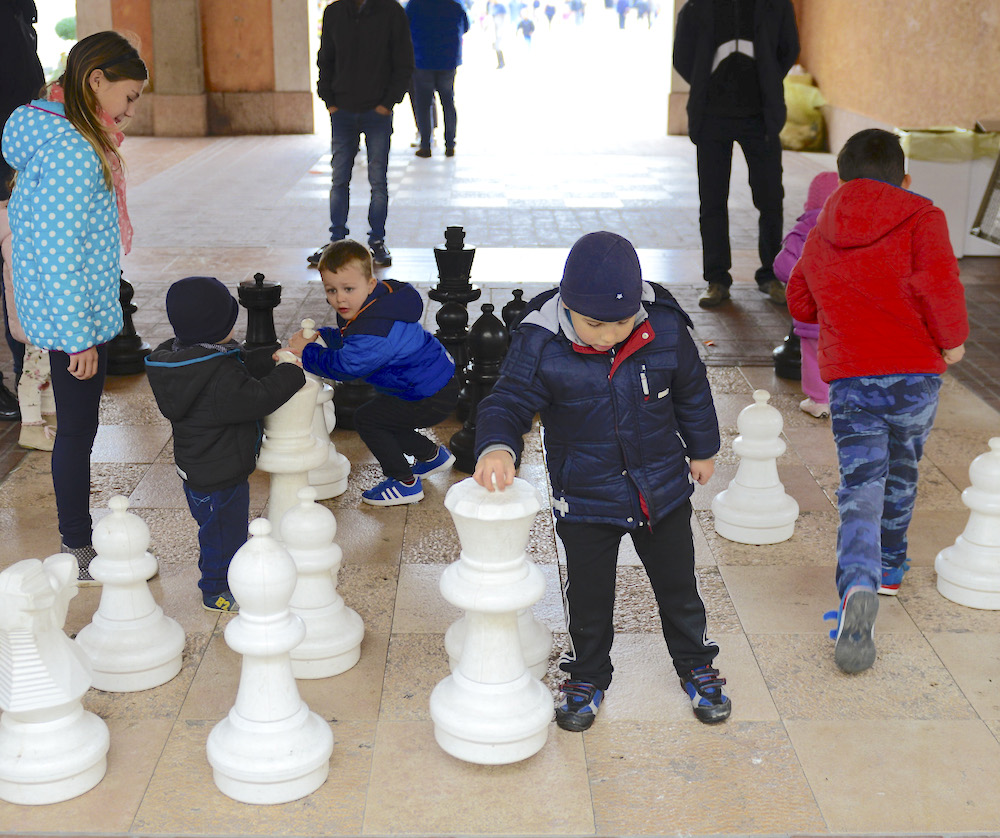
The world is changing fast so there are many reasons why developing our students’ learning habits should become the core purpose of education. Some reasons have a strategic ring to them, others are more immediately practical.
Use the tab to briefly explore some of the reasons, and then use the Read more details on these ideas.. to explore these more deeply.
- Future employment and living fulfilling lives increasingly demands higher achievement together with the ability to enhance and transfer knowledge and operate collaboratively.
- Students’ lives are becoming more stressful. Being able to cope with difficulty and rise to the challenge are now essential for all students.
- The disconnect between outdated education systems and the increasingly complex needs of the 21st Century is selling learners short for their future.
- Research in the learning sciences shows that learning is itself a learnable craft but as yet schools are failing to capitalise on this research.
- Exam results predict but a small fraction of the variance in later life success
- Effective learning habits have strong effects on educational attainment but have additional positive effects on important life outcomes.
- Curriculum design, content and mastery have become more demanding of both learners and teachers. There’s a need to ensure students grow as self regulating, independent learners to ensure curriculum success.
- Educational research suggests that helping students to become better learners is viable and additionally has a positive influence on ‘results’.
Are any of these ideas behind your reason for contemplating Building Learning Power?
What are your reasons for wanting to build better learners?
What are your reasons for wanting to play the bigger educational game?
Read more detail on these ideas...
The future and learning
‘Students throughout the world need now to reach higher levels of achievement, not only to find fulfilling work but also to empower themselves to thrive in an increasingly complex world’
– Dylan Wiliam
- Employment requires being able to enhance and transfer knowledge and to operate collaboratively
- The capacity to learn and adapt needs to be lifelong because rapid change is a permanent state.
Schools and learning
The job of schools is to prepare all youngsters for their future lives. However, there’s a disconnect between education systems and the increasingly complex needs of the 21st Century. Students need the exam results AND a set of generic skills and attitudes to deal with complexity; learning dispositions such as curiosity, inquisitiveness, experimentation, reflectiveness and sociability.
Something to think about: What are the qualities or dispositions that you are trying to develop in your pupils… and do you know whether you are doing so?
Learning to learn better
Research in the learning sciences shows that learning is itself a learnable craft; that we can all get better at learning. This means that schools, teachers and parents can enable young people to help themselves to develop as better, more effective learners.
- Vast amounts of information is available and learners, young and old, need to know how to find and select relevant information, to process it, connect it, to understand it and use it.
- Learning is increasingly taking place in different settings and with different relationships.
- Learning is a way of life.
Schools approach getting Good Results in one of two ways:
The traditional, transmission model
Good Results PLUS learners who are passive, dependent and anxious about failure.
OR
The learning-centred model
Good Results PLUS learners who are inquisitive, imaginative, and independent and have other such characteristics that will stand them in good stead for a complex world.
Something to think about: Where is your school now ? How would you prefer your school to be ?
About the Plus
Building Better Learners is about the learning-centred PLUS; how to deliver it, build it, sustain it and track it such that students are prepared as lifelong learners: able to deal with the new and complex with confident uncertainty.
Doing this involves teachers becoming more precise and forensic about learning behaviours and attitudes, and shifting school cultures to being more learning friendly.
Given that we know how, why would we not?
Changes in learners
In learning-friendly cultures students gradually grow their learning attitudes and behaviours.
Perseverance, self-control, attentiveness, resilience to adversity, openness to experience, empathy, tolerance to diverse options. A wealth of high-value learning habits.
And in case you are wondering why such habits matter more, recent research has shown:
- Achievement tests predict only a small fraction of the variance in later life success
- Achievement tests don’t adequately capture such qualities
- Learning habits have strong effects on educational attainment but have additional effects on important life outcomes beyond their effects on schooling
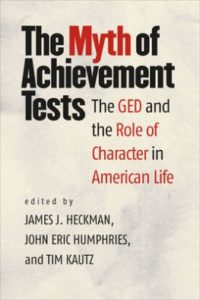
The Myth of Achievement Tests: The GED and the Role of Character in American Life, James Hacker (Amazon)
The Theory of Building Learning Power
Guy Claxton, the originator of the Supple Learning Mind framework explains why it’s possible to help students to get smarter.
More immediate practical arguments
If the strategic arguments aren’t appropriate for you there are plenty of other issues swirling around education that point to why it makes sense to build students as better learners.
Influences from….curriculum design, content and mastery
England’s National Curriculum introduced in 2015 has more demanding standards for Literacy and Numeracy. Students are expected to handle difficult concepts earlier in their school careers, and the content has become narrower and more challenging.
Deeper, more challenging curriculum demands are causing shifts in teaching approaches. One school of thought is moving towards more direct instruction, memorisation and deliberate practice, while another is moving towards enabling students to take increasing responsibility for their own learning, giving them the tools to do so. It is this second approach that is part of Building Learning Power.
Mastery hasn’t just become a new buzz word in education, it has become one of the key aims and characteristics of the new curriculum. The aim is to establish broad and deep understanding of content rather than pushing to ever higher levels often with brittle understanding. Where students and teachers develop a deeper understanding of how learning works and consciously use a wide range of learning behaviours, mastery of content is achieved more quickly and naturally.
Influences from….what Ofsted now look for
When Ofsted came into being way back in the early 1990s the first framework attempted to include a hard look at student learning. Despite this good start, looking for how learning happened was quietly and quickly dropped and so for the best part of twenty years inspections concentrated on teaching. However, with the growth of the learning sciences and greater understanding of the learning process, learning and learners are re-establishing themselves in the Ofsted framework. The latest Ofsted framework includes this indicator:
“Pupils love the challenge of learning and are resilient to failure. They are curious, interested learners who seek out and use new information to develop, consolidate and deepen their knowledge, understanding and skills. They thrive in lessons and also regularly take up opportunities to learn through extra-curricular activities.”
Influences….from the world of research
Growth Mindset and its fit with learning power
The research of Carol Dweck into what she named Fixed and Growth mindsets has grown in popularity in the last few years. Attempts to train both teachers and students in the ideas seem to have had mixed results. Basically it is about nurturing growth mindsets where students value putting in the effort, find challenge useful, learn from mistakes, find feedback useful, ensure their thinking is open to change, and keep going through the tough times. In other words, they know how to concentrate on and enjoy the process of learning itself.
Building Learning Power embraces all these ideas and sets them within the notion of a learning friendly classroom that extends students’ understanding of learning. So in learning powered classrooms, students not only use the functional skill of learning (learning from mistakes, putting in the effort, coping with challenge, etc.) but they also become familiar with a wider range of learning behaviours that they can put to good use; behaviours like imagining, reasoning, collaborating, empathising and so forth. They learn to play with a full deck of learning cards.
Such beliefs about learning can’t be trained into students in a short lived course. Learners have to come to such skills and beliefs through experience – what they experience hour by hour and day by day in that hothouse of learning, the classroom.

Which of these many potential influences resonate with you ?
Is it really possible to mount an argument against building better learners ?
Close Me
Section 2. Building powerful learners: two guiding frameworks
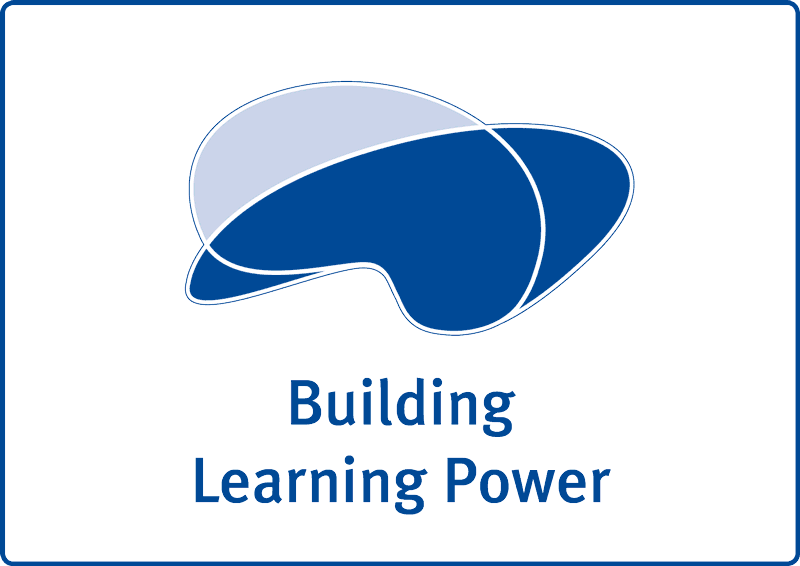
Building Learning Power puts at the heart of education the development of psychological characteristics that are judged to be of the highest value in young people growing up in a turbulent and increasingly complex world. There are two main parts to the approach:
![BLP_Brain_Generic_no-Rs-[Converted]](https://www.buildinglearningpower.com/wp-content/uploads/2016/12/BLP_Brain_Generic_no-Rs-Converted-300x216.png)
A: a model of a learner and learning, in terms of a set of characteristics that work together to make a person a highly capable learner; we use ‘learning power’ to describe the effect. [The Supple Learning Mind]
B: a view of the kind of pedagogy that will nurture and strengthen the learning characteristics in ![]() young people. [The Teachers’ Palette]
young people. [The Teachers’ Palette]
These are bound together by the fundamental idea that ‘learning is a learnable craft’, and by explicit, detailed discussion of how learning works, supported by a rich repertoire of words and actions.
A. The Supple Learning Mind
The Supple Learning Mind framework, originally conceived and researched by Professor Guy Claxton, reveals learning as a complex process that isn’t just about thinking and having a good memory; it includes how we feel, how we think, how we learn with and from others and how we manage the process of learning. It gives the beginnings of a learning language that helps teachers think about how learning behaviours enable students to grow as learners and tackle the curriculum more profitably.
B. The Teachers’ Palette
The Teachers’ Palette provides an overview of aspects of a learning-friendly culture that combine to create the seedbed for building powerful learners. It includes the types of teacher actions that create the conditions necessary for such learning to become habituated – how teachers relate to students, the language they use, the types of tasks they design, and the things they celebrate and value; their teaching mindset.
The Supple Learning Mind framework of high value learning behaviours.
… captures each of the domains of learning:
- The Emotional domain of learning (feelings) in order to build Resilience.
- The Cognitive domain of learning (thinking) in order to build Resourcefulness.
- The Social domain of learning (relating) in order to build Reciprocity.
- The Strategic domain of learning (managing learning) in order to build Reflectiveness.
The Teachers’ Palette framework to build learning friendly cultures.
Learning-friendly cultures systematically cultivate habits and attitudes that enable young people to face difficulty calmly, confidently and creatively. This often means moving the focus from what teachers do to a focus on what learners do. Moving from a focus on product and performance to a focus on the process of learning. It’s a gradual, sometimes difficult, but hugely worthwhile process of culture change by schools and habit change by teachers.
Section 3 Innovation takes effort.
The effort a school, its teachers and its students will need to put in to build powerful learners is significant. We are not going to pull any punches and tell you it’s easy because it isn’t. It can take three or four years to achieve fluency in the approach across the school. But we can say categorically that the journey will be hugely worthwhile, endlessly interesting and keep you smiling all the way through.
Bridging the gap in teaching

The diagram above offers glimpses of the difference between traditional good teaching and teaching that nurtures the learning habits of powerful learners. Look through the following tabs to find out more about bridging this gap.
3a. Making the shift from traditional good teaching to teaching for learning power.
Developing students as learning powered learners is a long term innovation. It requires far more than reading the odd book and trying out a few of the ideas in practice. Even the traditional Inservice training day can only scratch the surface. This is because the approach has implications not just for student learning, but for staff learning too. Teachers’ habits as learners have to become part of the picture – how they go about changing is as relevant as what changes they want to bring about. This isn’t just about teachers knowing more about teaching, it’s about teaching differently.
3b. What does ‘teaching differently’ look like? Try this quiz.
Basically, teachers will need to become more forensic about learning, exploring learning behaviours through talk, stretching them through activities, modelling them, and valuing them by celebrating their use and growth.
Look at the statements and work out:
- how often you try to help students develop such behaviours by the way that you teach at present;
- how many of your students display these behaviours in the classroom (without knowing it).
Having completed the quiz ask yourself:
From the left hand column:
- Which behaviours did you denote OFTEN ?
- Which do you RARELY attend to?
- Which psychological domain receives most attention? (emotional, cognitive, social, strategic)
- What might this reveal about your teaching?
- Key Question: How do you know if/how students are improving in these behaviours?
From the right hand column:
- Which behaviour was most difficult to assign students to? i.e. the things you may not know about your students
- What patterns are emerging?
- Is there a link between what you do and how students are as learners?
- What is this making you wonder?
3c. Where are we now? Another quiz to try.
This tool shows just some of the small, yet profound, shifts teachers make when they are surfacing learning.
Each thread explores one of the 12 aspects of the Teachers’ Palette (mentioned in Section 2) and begins to put flesh on the journey towards ‘Bridging the Gap’.
Ask yourself, where is my classroom/school on each of these indicator threads ?
You don’t have to choose one of our descriptors – if you think ‘we are further on than ‘xxx’ but not yet at ‘yyy”, then score yourself accordingly.
As an additional challenge, try to write a descriptor for where you are positioning your classroom/school.
Scoring
- If most of your scores are 3 or less, classrooms are still heavily teacher focused.
- Scores in the range 4 through 7 suggest that classrooms are becoming increasingly learner focused.
- Scores above 7 suggest that the classroom is already learning focused.
Wherever you are now, building pupils as more powerful learners is about ‘Bridging the Gap’ and moving classrooms towards becoming increasingly learning focused.
3d. Making subtle shifts in practice takes a big effort in unlearning.
When teachers want different outcomes for their students it actually involves them in changing their teaching habits. It’s not simply about knowing about new techniques, it is about doing what you do differently. That’s much harder. It involves changes to;
- what you know – knowledge
- what you believe – feelings or attitudes
- what you can do – your skills
- what you actually do – putting it all into practice
So changing how you teach is a delicate, complex process……...that’s why it’s hard!
And the hardest thing isn’t getting new ideas into teachers’ heads
It’s getting the old ones out…….that’s why it takes time and effort.
It takes time and practice to undo old habits and become graceful at new ones……that’s why we have based our learning programmes on research into how adults learn and the professional value of teacher learning communities. You will find out more about this in the next section.
Section 4. A blended learning programme to ensure changes in practice.
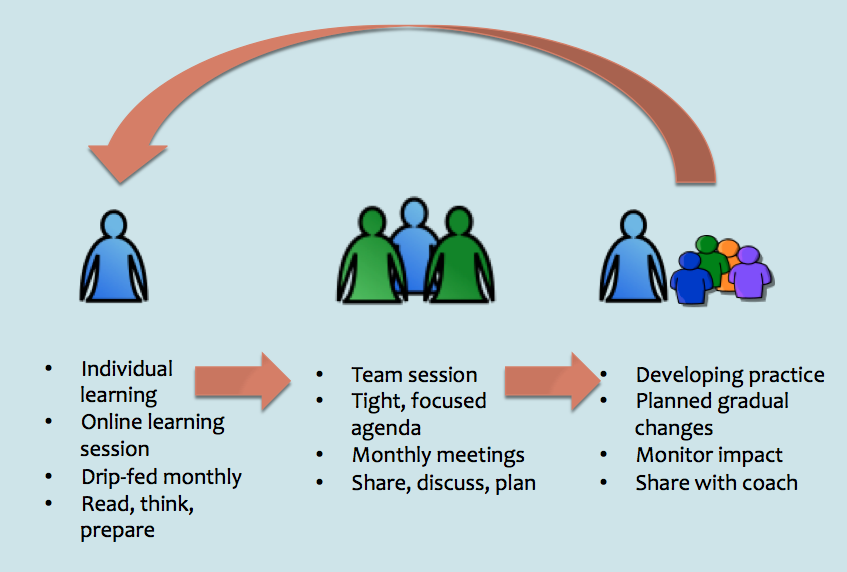
4a. What it takes to grow innovative practice
For the school to take on wholeheartedly the new roles and new paradigms that minute-to-minute and day-by-day build better learning requires far more than just the quick exposure to its principles and methods you have seen thus far. Development of this magnitude asks a lot of teachers. They have to go through a process of un-knowing, re-learning, unpacking and re-adjusting.
The programme we have compiled is a careful blend of:
- online learning sessions….that faithfully disseminate the researched content for building better learners;
- professional learning team sessions ……actioned by the school that provide sustained, meaningful assistance; learning with and from colleagues;
- trying things out for yourself in the classroom……because “learning by doing” is integral to the development of expertise and expertise cannot be developed quickly. It can only be developed if teachers have ample opportunity for practice, reflection, and adjustment.
This trio of learning opportunities work together to help teachers replace long-standing habituated practices with more effective ones.
4b. Why online learning?
The online learning aspect provides the content of the Learning Power approach based on over 20 years of research and development in schools. It attempts to cut the big complex innovation of Building Learning Power into more bite size chunks that schools and teachers can make sense of and implement over time.
Why just reading a book won’t cut it. We’ve discovered over time that:
- schools have had a tendency to think of the approach as merely a few tweaks in classroom practice> This translates into ‘lite’ versions that inevitably fizzle out;
- research into the shifts required for learning friendly classroom cultures has given the approach a richer, more concrete vision of how to implement it across a school;
- research into how learners grow and progress as learners…what the building bit of BLP means has made the approach more purposeful.
Thus, what the online courses and sessions are attempting to do is:
- to offer bite size chunks for schools implement;
- to faithfully offer the researched content in a do-able form i.e. so that you only get the bits we know work. This saves you time twiddling about with stuff that might sound good but doesn’t do the job;
- structure professional learning sessions because these are the best way of supporting and delivering changes in classroom practice.
4c. Why Learning Communities?
All the evidence shows that teachers change their practice when they work together and support each other in trying out new teaching strategies, within a culture of classroom based action research. It is about teachers being empowered to explore together to find out what works with their students, in this context, at this time. As a consequence, the school learns its way forward, together.
Teacher learning communities provide a forum for supporting teachers in converting the information and ideas from the online learning sessions into “lived” practices within their classrooms. Such communities provide a safe forum in which to:
- kick around ideas from the online content,
- unpack it’s meaning when it’s unclear,
- consider what’s do-able and appropriate for students;
- make plans for what and how you might incorporate the ideas into practice;
- share and unpack what has been tried in the classroom;
- relate triumphs and tribulations;
- reflect on what might be done differently.
Teacher learning communities are the engines of teacher development.
We would be happy to welcome your school to the growing family of schools that are taking part in the online blended learning programmes. To find out more about how the programmes work, click on the appropriate link below.
Online blended learning programmes to support the development of powerful learners

Building Better Learners: Training day start
Includes online course Stepping Stones Phase 1
For Primary Schools
Building Learning Habits: Training course start
Includes online course Learning Habits in a Nutshell Phase 1
For Secondary Schools
Online only programmes
We also have short online programmes and resources that would enable you to introduce Learning Power to staff without the need for face-to-face training or consultancy.
Building Better Learners: On-line start (for primary schools)
Building Learning Habits: Online start (for secondary schools)

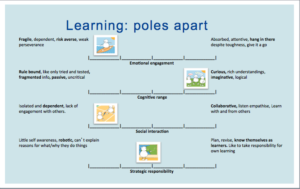
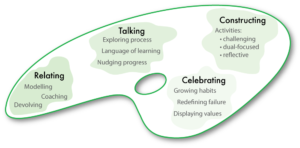

Comments are closed.